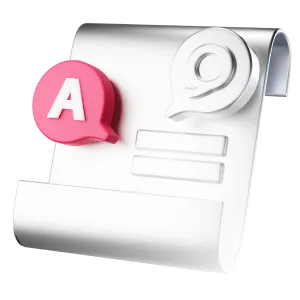You may need a sway bar replacement if the bar snaps or the mounting holes become worn, but it’s more common to replace the sway bar links or bushings.
How much does a sway bar replacement cost?
The cost of replacing a sway bar ranges from about $200 to over $1,000, depending on the make and model of your vehicle, where you have the repair done and whether any other parts need to be replaced.
On some vehicles, a sway bar replacement will take as little as an hour. If the replacement part for your vehicle is inexpensive and replacement is quick, your repair costs will likely be on the low end of the price range. If parts for your car are difficult to source or if the repair requires additional work — like lowering the engine cradle to access the sway bar — your repair costs will be higher.
If worn sway bar links or sway bar bushings led to your broken sway bar, you’ll also need to replace those, which may add to your final cost. Your auto shop may recommend a wheel alignment at the time of the repair.
What does a sway bar do?
The sway bar works with your suspension to keep your vehicle from leaning side-to-side too much when you’re turning. When your vehicle turns, its weight naturally shifts to the side on the outside of the turn.
The sway bar — also known as an anti-roll bar, anti-sway bar or stabilizer bar — helps your vehicle maintain an even weight distribution. Not only does this create a more comfortable ride, but it also helps prevent rollover accidents, decreases strain on your tires and improves your traction on the road.
Some vehicles have one sway bar, some have two — a front and a rear — and some don’t have a sway bar at all.
How do I know if my sway bar is broken?
Symptoms of a sway bar in need of repair may include:
- A clunking or rattling noise, especially when you go over bumps.
- The vehicle leans to the outside of a turn.
- The tires show more wear on one side of your vehicle than the other.
- Noticeably less traction in turns.
Can I drive with a broken sway bar?
It’s not a good idea to drive your vehicle if the sway bar is broken. In addition to being uncomfortable, the lean when you turn could make your vehicle more likely to roll over. You’ll also have less control over the vehicle, so it may be difficult to avoid hazards in the road.
What causes a sway bar to need replacing?
It’s not common for a sway bar to wear out — more often, it’s the sway bar links or sway bar bushings that need to be replaced. But if you don’t replace your links or bushings once they’re damaged, the extra strain on the sway bar can damage the mounting holes or even cause the bar to snap.
Sway bar bushings connect your sway bar to the vehicle’s frame, while sway bar links connect the sway bar to the control arm of the vehicle’s suspension.
Other reasons your sway bar might break could include rough driving conditions, corrosion from dirt and salt, or an impact with another car or an object.
Can I replace my car’s sway bar links at home?
Unless you’re comfortable working on cars, this repair is better left to a professional mechanic. Your vehicle typically needs to be lifted completely into the air in order to access the sway bar — and unless you’re experienced working with lifts, that can be dangerous to do at home. A technician will also be able to perform a precision alignment afterward.

Expert insurance writer and editor Amy Bobinger specializes in car repair, car maintenance, and car insurance. Amy is passionate about creating content that helps consumers navigate challenges related to car ownership and achieve financial success in areas relating to cars. Amy has over 10 years of writing and editing experience. After several years as a freelance writer, Amy spent four years as an editing fellow at WikiHow, where she co-authored over 600 articles on topics including car maintenance and home ownership. Since joining Jerry’s editorial team in 2022, Amy has edited over 2,500 articles on car insurance, state driving laws, and car repair and maintenance.

Kevin Berry is the Senior Director of Content at Jerry and has been working in the digital content space since 2011 across the car insurance/repair, personal finance, travel and sports industries. Prior to Jerry, Kevin was a content team lead at NerdWallet overseeing the Multimedia Production and Travel Rewards teams. Previously, he worked for NBC Sports, Comcast Cable and Nike. He has a Master`s Degree from Arkansas State and a Bachelor`s from Oregon State University.
*The price information provided on our car repair webpages is intended for general informational purposes only. Actual prices for car repair services may vary based on various factors, including but not limited to the make and model of your vehicle, the extent of repair required, and the prevailing market conditions. All prices for real repair shops are estimations based on our research only. Therefore, the prices listed on our webpages should not be considered as final quotes or binding offers.








